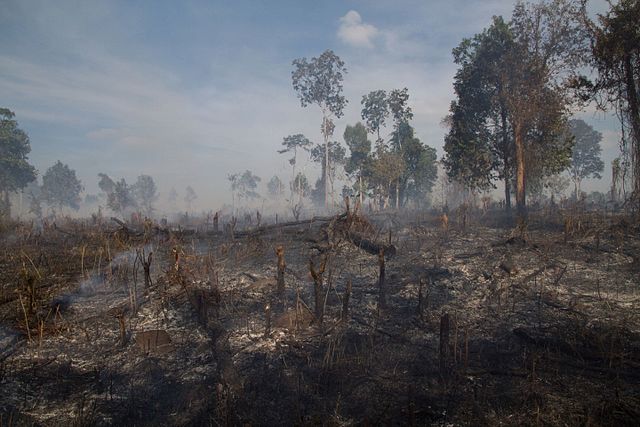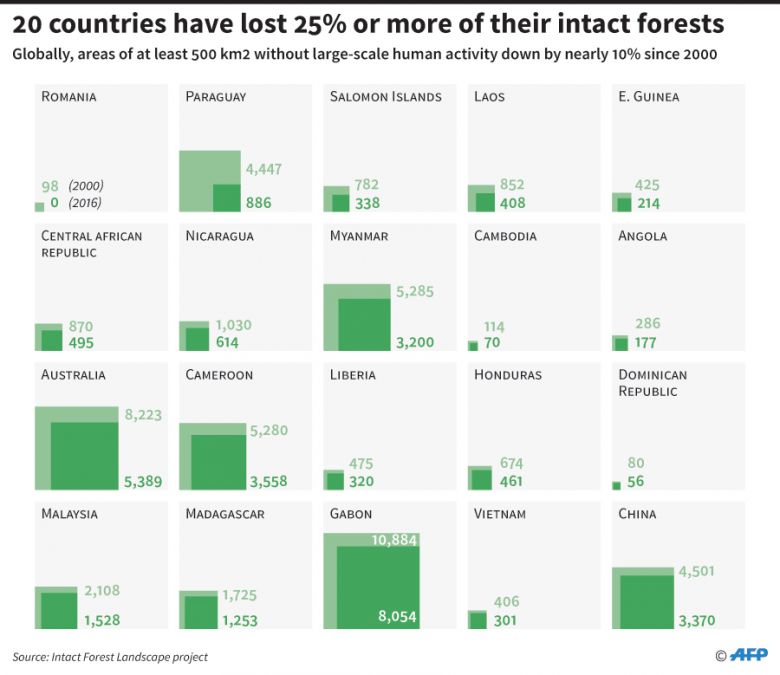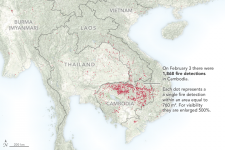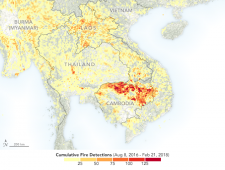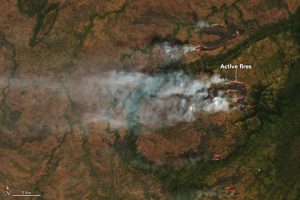AFP | Publication date 28 June 2018 | 16:26 ICT
The Earth’s intact forests shrank by an area larger than Austria every year from 2014 to 2016 at a 20 percent faster rate than during the previous decade, scientists said on Wednesday as the UN unveiled an initiative to harness the “untapped potential” of the land sector to fight climate change.
Despite a decades-long effort to halt deforestation, nearly 10 percent of undisturbed forests have been fragmented, degraded or simply chopped down since 2000, according to the analysis of satellite imagery.
Average daily loss over the first 17 years of this century was more than 200 square kilometers.
“Degradation of intact forest represents a global tragedy, as we are systematically destroying a crucial foundation of climate stability,” said Frances Seymour, a senior distinguished fellow at the World Resources Institute (WRI), and a contributor to the research, presented this week at a conference in Oxford.
“Forests are the only safe, natural, proven and affordable infrastructure we have for capturing and storing carbon.”
The findings come as the United Nations Development Programme (UNDP) and five major conservation organizations launched a five-year plan, Nature4Climate, to better leverage land use in reducing the greenhouse gas emissions that drive global warming.
“Thirty-seven percent of what is needed to stay below two degrees Celsius” – the cornerstone goal of the 196-nation Paris Agreement – “can be provided by land”, said Andrew Steer, WRI president, and CEO. “But only three percent of the public funding for mitigation goes to land and forest issues – that needs to change.”
Beyond climate, the last forest frontiers play a critical role in maintaining biodiversity, weather stability, clean air, and water quality. Some 500 million people worldwide depend directly on forests for their livelihoods.
A future without intact forests?
So-called intact forest landscapes – which can include wetlands and natural grass pastures – are defined as areas of at least 500 square kilometers with no visible evidence in satellite images of large-scale human use.
That means no roads, industrial agriculture, mines, railways, canals or transmission lines.
As of January 2017, there were about 11.6 million square kilometers of forests worldwide that still fit these criteria. From 2014 to 2016, that area declined by more than 87,000 square kilometers each year.
“Many countries may lose all their forest wildlands in the next 15 to 20 years,” Peter Potapov, an associate professor at the University of Maryland and lead scientist for the research, said.
On current trends, intact forests will disappear by 2030 in Paraguay, Laos, and Equatorial Guinea, and by 2040 in Cambodia, the Central African Republic, Nicaragua, Myanmar, and Angola.
“There could come a point in the future where no areas in the world qualify as ‘intact’ anymore,” said Tom Evans, director for forest conservation and climate mitigation at the Wildlife Conservation Society.
“It is certainly worrying.”
In tropical countries, the main causes of virgin forest loss are conversion to agriculture and logging. In Canada and the United States, fire is the main culprit, while in Russia and Australia, the destruction has been driven by fires, mining, and energy extraction.
Compared to annual declines during the period 2000-2013, Russia lost, on average, 90 percent more each year from 2014 to 2016. For Indonesia, the increase was 62 percent, and for Brazil, it was 16 percent.
Protected areas
The new results are based on a worldwide analysis of satellite imagery, built on a study first done in 2008 and repeated in 2013.
“The high-resolution data, like the one collected by the Landsat program, allows us to detect human-caused alteration and fragmentation of forest wildlands,” Potapov said.
Presented at the Intact Forests in the 21st Century conference at Oxford University, the finding will be submitted for peer-reviewed publication, said Potapov, who delivered a keynote to the three-day gathering.
Addressing colleagues from around the world, Potapov also challenged the effectiveness of a global voluntary certification system.
Set up in 1994 and backed by green groups such as the World Wildlife Fund, the self-stated mission of the Forest Stewardship Council (FSC) is to “promote environmentally appropriate, socially beneficial and economically viable management of the world’s forests”.
Many forest-products carry the FSC label, designed to reassure eco-conscious consumers.
But approximately half of all intact forest landscapes inside FSC-certified concessions were lost from 2000 to 2016 in Gabon and the Republic of Congo, the new data showed. In Cameroon, about 90 percent of FSC-monitored forest wildlands disappeared.
“FSC is an effective mechanism to fragment and degrade remaining intact forest landscapes, not a tool for their protection,” Potapov said.
National and regional parks have helped to slow the rate of decline.
The chances of forest loss were found to be three times higher outside protected areas than inside them, the researchers reported.
Source Link: https://www.phnompenhpost.com/international/future-without-intact-forests
